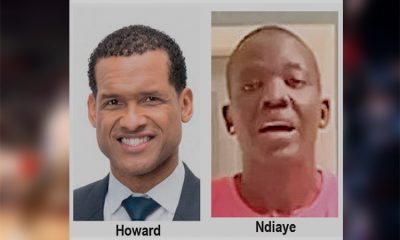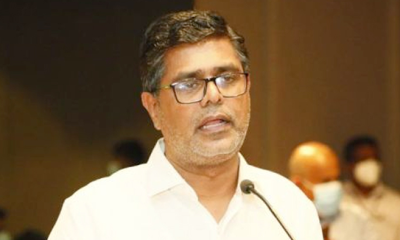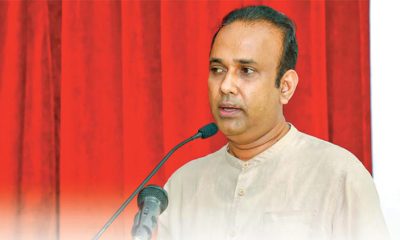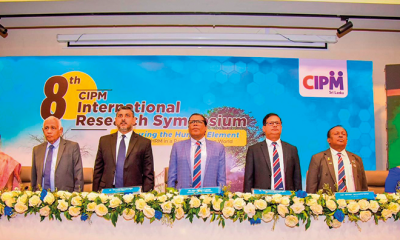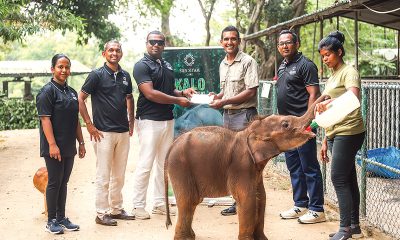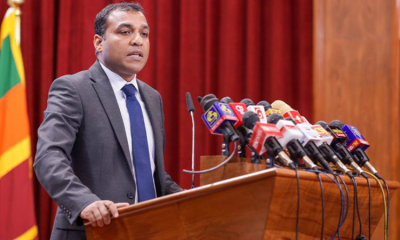Features
From Villain to Unsung Hero
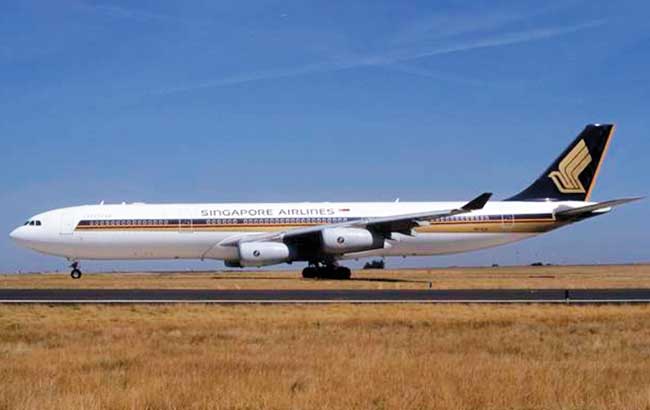
One winter morning in 1998, as a part of the SIA crew while planning a departure from Kimpo (Gimpo) International Airport Seoul South Korea, in our Airbus A 340 aircraft, we realised that it had snowed all night and the runway surface was ‘contaminated’ with melting snow (Slush). We had been told time and time again by the performance experts that a depth of snow, slush or standing water more than 3mm (1/8th of an inch), the proverbial SriLankan Baas’s ‘Noola’, on more than 25% of the Runway, it is considered to be contaminated. The Kimpo Airport Authorities hadn’t cleaned the runway surface like in most other airports.
A contaminated runway poses a whole host of problems for pilots attempting to take-off. Because of the natural resistance of the water, snow or both on the runway in varying degrees and depths, the acceleration to the take-off speed becomes slow as the wheels have to displace the contaminants using up a greater amount of runway length than on an uncontaminated (dry) runway. This leaves less runway length available for the aircraft to stop, if for some unforeseen reason the pilots need to abandon the take-off. Then stopping becomes a problem as the tyres may skid or aquaplane, making the wheel brakes ineffective with a good chance of over running the runway length available.
 In this day and age, to reduce the thermal and mechanical stresses to the jet aircraft engines it was recommended by the manufacturer that pilots use a reduced thrust setting on uncontaminated (dry) runways, for take-off. Therefore, it was mandated that on a contaminated runway, full thrust is used to enable the aircraft to accelerate quicker to the speed (V1) at which the Captain will have to decide whether he will stop or go. Every type of aircraft is tested in snow, slush or standing water, the spray patterns studied and a set of lower V1 speeds for slush operations are available for different take-off weights in graphs or in tabulated form for quick reference. At V1 speed, if the Captain decides to continue the take-off it becomes a ‘non-event’. However, if he decides to stop for any reason, it becomes regimented and exiting as he has got to announce to the First Officer that he is discontinuing the take-off, apply brakes, close the engine Throttles, keep the aircraft straight on the centre line (that may not be visible), deploy spoilers and Reverse Thrust bringing the aircraft to a stop and cancelling Reverse and spoilers at the appropriate time. The non-flying pilot notes the air speed at which the Captain rejected and announces to the Control Tower that they have abandoned the take-off and then monitors the deceleration, providing a back up to the Captain’s actions. These are standard Operating Procedures (SOP’S) evolve through the years. Noting the speed at which they rejected the take-off is necessary when it comes to brake cooling time after rejecting a take-off. The brakes in the old days became white hot with its use at high speed. With the use of Carbon brakes and integral cooling fans the problem is resolved to a large extent.
In this day and age, to reduce the thermal and mechanical stresses to the jet aircraft engines it was recommended by the manufacturer that pilots use a reduced thrust setting on uncontaminated (dry) runways, for take-off. Therefore, it was mandated that on a contaminated runway, full thrust is used to enable the aircraft to accelerate quicker to the speed (V1) at which the Captain will have to decide whether he will stop or go. Every type of aircraft is tested in snow, slush or standing water, the spray patterns studied and a set of lower V1 speeds for slush operations are available for different take-off weights in graphs or in tabulated form for quick reference. At V1 speed, if the Captain decides to continue the take-off it becomes a ‘non-event’. However, if he decides to stop for any reason, it becomes regimented and exiting as he has got to announce to the First Officer that he is discontinuing the take-off, apply brakes, close the engine Throttles, keep the aircraft straight on the centre line (that may not be visible), deploy spoilers and Reverse Thrust bringing the aircraft to a stop and cancelling Reverse and spoilers at the appropriate time. The non-flying pilot notes the air speed at which the Captain rejected and announces to the Control Tower that they have abandoned the take-off and then monitors the deceleration, providing a back up to the Captain’s actions. These are standard Operating Procedures (SOP’S) evolve through the years. Noting the speed at which they rejected the take-off is necessary when it comes to brake cooling time after rejecting a take-off. The brakes in the old days became white hot with its use at high speed. With the use of Carbon brakes and integral cooling fans the problem is resolved to a large extent.
In the present day in all the modern airliners braking is done automatically using ‘Auto Brakes’ with anti- skid devices operating and this exercise (Rejected Take off) is practiced in the Simulator every six months as a team exercise under the supervision of a Flight Instructor. As a further consideration, the manufacturer Boeing’s analysis of all the past rejected take-off accidents have also shown that if the Captain was two seconds too slow in rejecting the take-off at the decision speed of V1, the aircraft will exit the runway at the other end at 60kt! So, their recommendation was to be ‘go minded’ at V1 and not attempt to stop. The reader will agree that a lot of things happening and judgemental considerations going through the Captain’s mind simultaneously while on the take-off run.(what if)
Usually on take-off on an uncontaminated runway it was a legal requirement to be at a height of 35 feet over the end of the runway. On a contaminated runway the aircraft is allowed to clear the end at 15 feet to accommodate the loss of performance. In addition to all this, in jet aircraft, it is recommended to have the continuous ignition ‘on’ to ensure that the engines do not flameout (fail) due to slush ingestion by the engine intakes. Fortunately, it wasn’t snowing that day in Kimpo and therefore did not pose a problem with ice on the wings which would have created another problem for us as the wings are meant to be clean on take-off. These Standard Operating Procedures (SOPs) are all contained in the Flight Manual of any particular type of aircraft and expected to be read and understood by its Crew.
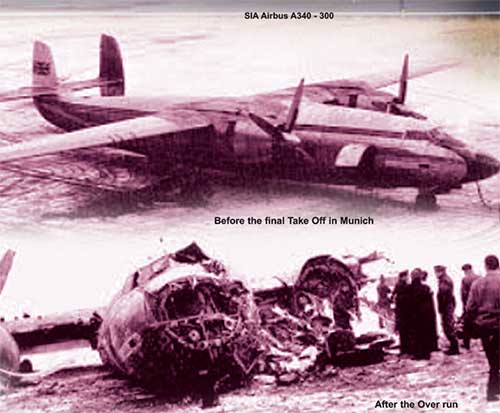 That morning the take-off at Kimpo went off like clockwork. As everything appeared to be normal there was no need to abandon the take-off and after getting airborne, we had to concentrate on other important things like a sharp turn left before reaching the DMZ (De Militarised Zone) and avoiding overflying the South Korean President’s Palace which was a known prohibited area. They would fire two tracer shells. If no action was taken to change course and avoid, they will attempt to shoot you out of the skies, passengers or no passengers!
That morning the take-off at Kimpo went off like clockwork. As everything appeared to be normal there was no need to abandon the take-off and after getting airborne, we had to concentrate on other important things like a sharp turn left before reaching the DMZ (De Militarised Zone) and avoiding overflying the South Korean President’s Palace which was a known prohibited area. They would fire two tracer shells. If no action was taken to change course and avoid, they will attempt to shoot you out of the skies, passengers or no passengers!
All in all, tackling a contaminated runway in modern times became a ‘piece of cake’ if one knew what to do. These procedures were not promulgated overnight. They were the result of ‘blood sweat and tears’ through the years. The story below is a good example.
In 1949 there was an accidental overrun of the runway of a Trans Canada Airlines (TCA) aircraft in Vancouver, Canada. The Investigators declared that the probable cause was the presence of slush (melting snow) on the runway preventing acceleration to the required speed for take-off. This observation was intimated to many airlines including British European Airlines (BEA) authorities who had not taken any cognizance and duly filed the letter without advising their operating crews of such possibilities.
Nine years later, on 6th Feb 1958, Capt James Thain and Capt Kenneth Rayment were operating a BEA charter flight from Belgrade Yugoslavia to London with the Manchester United Football Team and some well-known sports writers as their passengers. Both pilots were good friends and had served in the RAF together during WWII. Usually there would have been a regular First officer but since both captains had common interests like poultry farming, they had requested to operate together. The young Manchester United team known as ‘Busby Babes’ were well on their way to be European Cup Champions. Since the Airspeed Ambassador ‘Elizabethan’ aircraft did not have sufficient range to fly direct to London, they needed to do a Technical (refuelling) stop in Munich, Germany. The flight was uneventful till they reached Munich.
The Runway was contaminated with melting snow in Munich. Light snow was falling on the wings. Due to the fact that anti-ice heaters were used on the descent into Munich Airport, Capt. Thain decided not to get the wings cleaned. It was a judgment call.
After refuelling the crew attempted to take-off twice, but had to discontinue due to an engine malfunction. Then they taxied back to the ramp for a consultation with the Ground Engineer, after which the two captains decided to open power slowly to fix the engine problem which was known to occur in Munich which was over 1700 feet above mean sea level. On the third attempt the power was opened slowly and that involved a longer take off run which took the aircraft to a more contaminated unused part of the runway which actually made the aircraft lose speed from 117 knots to 105 knots and never accelerated to flying speed. Capt Thain was looking inside the cockpit and carefully ‘nursing’ the engines and monitoring the speed while Captain Rayment was handling the controls. When he looked outside the runway end was closing in quickly and it was too late. He opened throttles to the maximum. The wheels never left the ground because it didn’t have flying speed. The aircraft over ran and crashed through a fence, hit a tree and a house and burst into flames. The crash killed 23 out of the 44 passengers and crew on board, critically injuring Capt Kenneth Rayment, He passed away a few days later, leaving Capt Thain to carry the blame alone. With that, destroying the chances of Manchester United being European champions.
The German Accident investigator Capt. Hans J Reichel and his team arrived from Brunswick, West Germany, ill-equipped, about six hours later. By this time the weather had worsened and it was night time. He had to borrow lighting equipment from the BBC photo crew present at the site, He had been a pilot both in the Luftwaffe and Lufthansa the German Airline. The first thing he did was to check for wing ice and found a six-hour build-up of snow and declared that there was ice on the wings before take-off. No proper measurements of the depth of the slush were done on the runway at Munich. A parallel UK investigation was also launched. The formal accident inquiry commenced on 29th Apri’58 and was protracted and didn’t consider the effect of slush at all. The ‘Brits’ virtually fell in line with their German counterparts. The Final Accident Report came out on 9th March 1959, (More than a year after the crash), blaming the ice build-up on the wings and Capt Thain’s failure to de-ice.
It saidL:
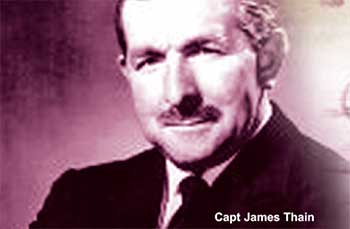 “Apart from the ice, we couldn’t find any other reason which could have contributed to the air crash “
“Apart from the ice, we couldn’t find any other reason which could have contributed to the air crash “
Capt Thain’s licence was suspended and he reverted to full time poultry farming while relentlessly working with the British Air Line Pilots Association (BALPA) to obtain more research data on the effects of slush on Take-off performance.
In 1961 Capt. Thain was fired from his job of BEA for allowing Capt Rayment to sit in the Left hand seat while he as designated Captain on the roster sat on the Right hand seat. The Captain on the roster should have sat on the Left hand seat and thus it was purported that he had violated the existing BEA Flight Crew Standing Orders which in itself a relatively minor matter. Looking back, it probably was just an excuse to shed him as this WWII veteran and BEA Captain ended up being an embarrassment to the Airline. There was no doubt about his ‘unquestionable ability’ up to that time of the accident. In the eyes of the general public and Football fans he was considered a villain.
If the German Accident Investigators blamed the Slush on the Runway for the overrun then the Munich Airport Authorities would have to take the rap for not cleaning the runway surface. It was rather obvious that like in most accidents it is convenient and emotionally satisfying to blame an individual and not the system that gave rise to the unsafe situation. Capt. Thain did not give up trying to clear his name. He was determined to find out the real cause of the accident. He appealed.
Seven months after the crash in September 1958 the FAA started conducting practical tests on the impact of slush on aircraft acceleration for take-off. Although there was new scientific evidence available, the Germans were not keen on reopening the case and Capt. Thain was languishing in guilt. Capt. Thain kept the pressure on. Eventually in 1967 Prime Minister Harold Wilson mentioned publicly, that Capt. Thain was a “victim of injustices.” Soon after (1968) the British were also conducting experiments with slush on the runway at Royal Aircraft Establishment (RAE) in Bedford in shallow ponds of standing water, using Canberra, Viscount and Ambassador Aircraft. The significant adverse effects of slush on the Runway were confirmed.
Finally, Capt. Thain’s persistence paid off and his plight was mentioned in Parliament and the British Authorities agreed to review the investigation and found that the German investigation was incomplete. The Investigators had not interviewed many witnesses including the Air Traffic Controllers and those who reached the wreck first and could have given evidence to say that there was no ice on the wings immediately before the crash. It seemed that witnesses had been selectively interviewed to fit the ‘probable cause’.
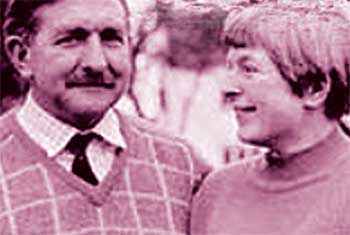 Eleven long years after the crash in March 1969 Capt. James Thain was finally exonerated, but died soon afterwards of a heart attack at a relatively young age of 54, due to trauma and stress. This prompted one of the ‘wags’ in the BALPA to declare that “If the crash doesn’t kill you, the inquiry will”
Eleven long years after the crash in March 1969 Capt. James Thain was finally exonerated, but died soon afterwards of a heart attack at a relatively young age of 54, due to trauma and stress. This prompted one of the ‘wags’ in the BALPA to declare that “If the crash doesn’t kill you, the inquiry will”
Capt. James Thain with his determination to find the real culprit of the Munich accident made taking off in slush safer for airline pilots, by triggering off research on both sides of the Atlantic that evolved into SOP’s which allowed us to take off safely from Kimpo that wintry morning.
In his own words, to his daughter, “The difference between the possible and impossible is merely a measure of man’s determination”
To me, Capt. James Thain was an unsung hero whose great determination to prove his innocence made flying safer for the future air travellers.
Features
The heart-friendly health minister

by Dr Gotabhya Ranasinghe
Senior Consultant Cardiologist
National Hospital Sri Lanka
When we sought a meeting with Hon Dr. Ramesh Pathirana, Minister of Health, he graciously cleared his busy schedule to accommodate us. Renowned for his attentive listening and deep understanding, Minister Pathirana is dedicated to advancing the health sector. His openness and transparency exemplify the qualities of an exemplary politician and minister.
Dr. Palitha Mahipala, the current Health Secretary, demonstrates both commendable enthusiasm and unwavering support. This combination of attributes makes him a highly compatible colleague for the esteemed Minister of Health.
Our discussion centered on a project that has been in the works for the past 30 years, one that no other minister had managed to advance.
Minister Pathirana, however, recognized the project’s significance and its potential to revolutionize care for heart patients.
The project involves the construction of a state-of-the-art facility at the premises of the National Hospital Colombo. The project’s location within the premises of the National Hospital underscores its importance and relevance to the healthcare infrastructure of the nation.
This facility will include a cardiology building and a tertiary care center, equipped with the latest technology to handle and treat all types of heart-related conditions and surgeries.
Securing funding was a major milestone for this initiative. Minister Pathirana successfully obtained approval for a $40 billion loan from the Asian Development Bank. With the funding in place, the foundation stone is scheduled to be laid in September this year, and construction will begin in January 2025.
This project guarantees a consistent and uninterrupted supply of stents and related medications for heart patients. As a result, patients will have timely access to essential medical supplies during their treatment and recovery. By securing these critical resources, the project aims to enhance patient outcomes, minimize treatment delays, and maintain the highest standards of cardiac care.
Upon its fruition, this monumental building will serve as a beacon of hope and healing, symbolizing the unwavering dedication to improving patient outcomes and fostering a healthier society.We anticipate a future marked by significant progress and positive outcomes in Sri Lanka’s cardiovascular treatment landscape within the foreseeable timeframe.
Features
A LOVING TRIBUTE TO JESUIT FR. ALOYSIUS PIERIS ON HIS 90th BIRTHDAY

by Fr. Emmanuel Fernando, OMI
Jesuit Fr. Aloysius Pieris (affectionately called Fr. Aloy) celebrated his 90th birthday on April 9, 2024 and I, as the editor of our Oblate Journal, THE MISSIONARY OBLATE had gone to press by that time. Immediately I decided to publish an article, appreciating the untiring selfless services he continues to offer for inter-Faith dialogue, the renewal of the Catholic Church, his concern for the poor and the suffering Sri Lankan masses and to me, the present writer.
It was in 1988, when I was appointed Director of the Oblate Scholastics at Ampitiya by the then Oblate Provincial Fr. Anselm Silva, that I came to know Fr. Aloy more closely. Knowing well his expertise in matters spiritual, theological, Indological and pastoral, and with the collaborative spirit of my companion-formators, our Oblate Scholastics were sent to Tulana, the Research and Encounter Centre, Kelaniya, of which he is the Founder-Director, for ‘exposure-programmes’ on matters spiritual, biblical, theological and pastoral. Some of these dimensions according to my view and that of my companion-formators, were not available at the National Seminary, Ampitiya.
Ever since that time, our Oblate formators/ accompaniers at the Oblate Scholasticate, Ampitiya , have continued to send our Oblate Scholastics to Tulana Centre for deepening their insights and convictions regarding matters needed to serve the people in today’s context. Fr. Aloy also had tried very enthusiastically with the Oblate team headed by Frs. Oswald Firth and Clement Waidyasekara to begin a Theologate, directed by the Religious Congregations in Sri Lanka, for the contextual formation/ accompaniment of their members. It should very well be a desired goal of the Leaders / Provincials of the Religious Congregations.
Besides being a formator/accompanier at the Oblate Scholasticate, I was entrusted also with the task of editing and publishing our Oblate journal, ‘The Missionary Oblate’. To maintain the quality of the journal I continue to depend on Fr. Aloy for his thought-provoking and stimulating articles on Biblical Spirituality, Biblical Theology and Ecclesiology. I am very grateful to him for his generous assistance. Of late, his writings on renewal of the Church, initiated by Pope St. John XX111 and continued by Pope Francis through the Synodal path, published in our Oblate journal, enable our readers to focus their attention also on the needed renewal in the Catholic Church in Sri Lanka. Fr. Aloy appreciated very much the Synodal path adopted by the Jesuit Pope Francis for the renewal of the Church, rooted very much on prayerful discernment. In my Religious and presbyteral life, Fr.Aloy continues to be my spiritual animator / guide and ongoing formator / acccompanier.
Fr. Aloysius Pieris, BA Hons (Lond), LPh (SHC, India), STL (PFT, Naples), PhD (SLU/VC), ThD (Tilburg), D.Ltt (KU), has been one of the eminent Asian theologians well recognized internationally and one who has lectured and held visiting chairs in many universities both in the West and in the East. Many members of Religious Congregations from Asian countries have benefited from his lectures and guidance in the East Asian Pastoral Institute (EAPI) in Manila, Philippines. He had been a Theologian consulted by the Federation of Asian Bishops’ Conferences for many years. During his professorship at the Gregorian University in Rome, he was called to be a member of a special group of advisers on other religions consulted by Pope Paul VI.
Fr. Aloy is the author of more than 30 books and well over 500 Research Papers. Some of his books and articles have been translated and published in several countries. Among those books, one can find the following: 1) The Genesis of an Asian Theology of Liberation (An Autobiographical Excursus on the Art of Theologising in Asia, 2) An Asian Theology of Liberation, 3) Providential Timeliness of Vatican 11 (a long-overdue halt to a scandalous millennium, 4) Give Vatican 11 a chance, 5) Leadership in the Church, 6) Relishing our faith in working for justice (Themes for study and discussion), 7) A Message meant mainly, not exclusively for Jesuits (Background information necessary for helping Francis renew the Church), 8) Lent in Lanka (Reflections and Resolutions, 9) Love meets wisdom (A Christian Experience of Buddhism, 10) Fire and Water 11) God’s Reign for God’s poor, 12) Our Unhiddden Agenda (How we Jesuits work, pray and form our men). He is also the Editor of two journals, Vagdevi, Journal of Religious Reflection and Dialogue, New Series.
Fr. Aloy has a BA in Pali and Sanskrit from the University of London and a Ph.D in Buddhist Philosophy from the University of Sri Lankan, Vidyodaya Campus. On Nov. 23, 2019, he was awarded the prestigious honorary Doctorate of Literature (D.Litt) by the Chancellor of the University of Kelaniya, the Most Venerable Welamitiyawe Dharmakirthi Sri Kusala Dhamma Thera.
Fr. Aloy continues to be a promoter of Gospel values and virtues. Justice as a constitutive dimension of love and social concern for the downtrodden masses are very much noted in his life and work. He had very much appreciated the commitment of the late Fr. Joseph (Joe) Fernando, the National Director of the Social and Economic Centre (SEDEC) for the poor.
In Sri Lanka, a few religious Congregations – the Good Shepherd Sisters, the Christian Brothers, the Marist Brothers and the Oblates – have invited him to animate their members especially during their Provincial Congresses, Chapters and International Conferences. The mainline Christian Churches also have sought his advice and followed his seminars. I, for one, regret very much, that the Sri Lankan authorities of the Catholic Church –today’s Hierarchy—- have not sought Fr.
Aloy’s expertise for the renewal of the Catholic Church in Sri Lanka and thus have not benefited from the immense store of wisdom and insight that he can offer to our local Church while the Sri Lankan bishops who governed the Catholic church in the immediate aftermath of the Second Vatican Council (Edmund Fernando OMI, Anthony de Saram, Leo Nanayakkara OSB, Frank Marcus Fernando, Paul Perera,) visited him and consulted him on many matters. Among the Tamil Bishops, Bishop Rayappu Joseph was keeping close contact with him and Bishop J. Deogupillai hosted him and his team visiting him after the horrible Black July massacre of Tamils.
Features
A fairy tale, success or debacle

Sri Lanka-Singapore Free Trade Agreement
By Gomi Senadhira
senadhiragomi@gmail.com
“You might tell fairy tales, but the progress of a country cannot be achieved through such narratives. A country cannot be developed by making false promises. The country moved backward because of the electoral promises made by political parties throughout time. We have witnessed that the ultimate result of this is the country becoming bankrupt. Unfortunately, many segments of the population have not come to realize this yet.” – President Ranil Wickremesinghe, 2024 Budget speech
Any Sri Lankan would agree with the above words of President Wickremesinghe on the false promises our politicians and officials make and the fairy tales they narrate which bankrupted this country. So, to understand this, let’s look at one such fairy tale with lots of false promises; Ranil Wickremesinghe’s greatest achievement in the area of international trade and investment promotion during the Yahapalana period, Sri Lanka-Singapore Free Trade Agreement (SLSFTA).
It is appropriate and timely to do it now as Finance Minister Wickremesinghe has just presented to parliament a bill on the National Policy on Economic Transformation which includes the establishment of an Office for International Trade and the Sri Lanka Institute of Economics and International Trade.
Was SLSFTA a “Cleverly negotiated Free Trade Agreement” as stated by the (former) Minister of Development Strategies and International Trade Malik Samarawickrama during the Parliamentary Debate on the SLSFTA in July 2018, or a colossal blunder covered up with lies, false promises, and fairy tales? After SLSFTA was signed there were a number of fairy tales published on this agreement by the Ministry of Development Strategies and International, Institute of Policy Studies, and others.
However, for this article, I would like to limit my comments to the speech by Minister Samarawickrama during the Parliamentary Debate, and the two most important areas in the agreement which were covered up with lies, fairy tales, and false promises, namely: revenue loss for Sri Lanka and Investment from Singapore. On the other important area, “Waste products dumping” I do not want to comment here as I have written extensively on the issue.
1. The revenue loss
During the Parliamentary Debate in July 2018, Minister Samarawickrama stated “…. let me reiterate that this FTA with Singapore has been very cleverly negotiated by us…. The liberalisation programme under this FTA has been carefully designed to have the least impact on domestic industry and revenue collection. We have included all revenue sensitive items in the negative list of items which will not be subject to removal of tariff. Therefore, 97.8% revenue from Customs duty is protected. Our tariff liberalisation will take place over a period of 12-15 years! In fact, the revenue earned through tariffs on goods imported from Singapore last year was Rs. 35 billion.
The revenue loss for over the next 15 years due to the FTA is only Rs. 733 million– which when annualised, on average, is just Rs. 51 million. That is just 0.14% per year! So anyone who claims the Singapore FTA causes revenue loss to the Government cannot do basic arithmetic! Mr. Speaker, in conclusion, I call on my fellow members of this House – don’t mislead the public with baseless criticism that is not grounded in facts. Don’t look at petty politics and use these issues for your own political survival.”
I was surprised to read the minister’s speech because an article published in January 2018 in “The Straits Times“, based on information released by the Singaporean Negotiators stated, “…. With the FTA, tariff savings for Singapore exports are estimated to hit $10 million annually“.
As the annual tariff savings (that is the revenue loss for Sri Lanka) calculated by the Singaporean Negotiators, Singaporean $ 10 million (Sri Lankan rupees 1,200 million in 2018) was way above the rupees’ 733 million revenue loss for 15 years estimated by the Sri Lankan negotiators, it was clear to any observer that one of the parties to the agreement had not done the basic arithmetic!
Six years later, according to a report published by “The Morning” newspaper, speaking at the Committee on Public Finance (COPF) on 7th May 2024, Mr Samarawickrama’s chief trade negotiator K.J. Weerasinghehad had admitted “…. that forecasted revenue loss for the Government of Sri Lanka through the Singapore FTA is Rs. 450 million in 2023 and Rs. 1.3 billion in 2024.”
If these numbers are correct, as tariff liberalisation under the SLSFTA has just started, we will pass Rs 2 billion very soon. Then, the question is how Sri Lanka’s trade negotiators made such a colossal blunder. Didn’t they do their basic arithmetic? If they didn’t know how to do basic arithmetic they should have at least done their basic readings. For example, the headline of the article published in The Straits Times in January 2018 was “Singapore, Sri Lanka sign FTA, annual savings of $10m expected”.
Anyway, as Sri Lanka’s chief negotiator reiterated at the COPF meeting that “…. since 99% of the tariffs in Singapore have zero rates of duty, Sri Lanka has agreed on 80% tariff liberalisation over a period of 15 years while expecting Singapore investments to address the imbalance in trade,” let’s turn towards investment.
Investment from Singapore
In July 2018, speaking during the Parliamentary Debate on the FTA this is what Minister Malik Samarawickrama stated on investment from Singapore, “Already, thanks to this FTA, in just the past two-and-a-half months since the agreement came into effect we have received a proposal from Singapore for investment amounting to $ 14.8 billion in an oil refinery for export of petroleum products. In addition, we have proposals for a steel manufacturing plant for exports ($ 1 billion investment), flour milling plant ($ 50 million), sugar refinery ($ 200 million). This adds up to more than $ 16.05 billion in the pipeline on these projects alone.
And all of these projects will create thousands of more jobs for our people. In principle approval has already been granted by the BOI and the investors are awaiting the release of land the environmental approvals to commence the project.
I request the Opposition and those with vested interests to change their narrow-minded thinking and join us to develop our country. We must always look at what is best for the whole community, not just the few who may oppose. We owe it to our people to courageously take decisions that will change their lives for the better.”
According to the media report I quoted earlier, speaking at the Committee on Public Finance (COPF) Chief Negotiator Weerasinghe has admitted that Sri Lanka was not happy with overall Singapore investments that have come in the past few years in return for the trade liberalisation under the Singapore-Sri Lanka Free Trade Agreement. He has added that between 2021 and 2023 the total investment from Singapore had been around $162 million!
What happened to those projects worth $16 billion negotiated, thanks to the SLSFTA, in just the two-and-a-half months after the agreement came into effect and approved by the BOI? I do not know about the steel manufacturing plant for exports ($ 1 billion investment), flour milling plant ($ 50 million) and sugar refinery ($ 200 million).
However, story of the multibillion-dollar investment in the Petroleum Refinery unfolded in a manner that would qualify it as the best fairy tale with false promises presented by our politicians and the officials, prior to 2019 elections.
Though many Sri Lankans got to know, through the media which repeatedly highlighted a plethora of issues surrounding the project and the questionable credentials of the Singaporean investor, the construction work on the Mirrijiwela Oil Refinery along with the cement factory began on the24th of March 2019 with a bang and Minister Ranil Wickremesinghe and his ministers along with the foreign and local dignitaries laid the foundation stones.
That was few months before the 2019 Presidential elections. Inaugurating the construction work Prime Minister Ranil Wickremesinghe said the projects will create thousands of job opportunities in the area and surrounding districts.
The oil refinery, which was to be built over 200 acres of land, with the capacity to refine 200,000 barrels of crude oil per day, was to generate US$7 billion of exports and create 1,500 direct and 3,000 indirect jobs. The construction of the refinery was to be completed in 44 months. Four years later, in August 2023 the Cabinet of Ministers approved the proposal presented by President Ranil Wickremesinghe to cancel the agreement with the investors of the refinery as the project has not been implemented! Can they explain to the country how much money was wasted to produce that fairy tale?
It is obvious that the President, ministers, and officials had made huge blunders and had deliberately misled the public and the parliament on the revenue loss and potential investment from SLSFTA with fairy tales and false promises.
As the president himself said, a country cannot be developed by making false promises or with fairy tales and these false promises and fairy tales had bankrupted the country. “Unfortunately, many segments of the population have not come to realize this yet”.
(The writer, a specialist and an activist on trade and development issues . )


